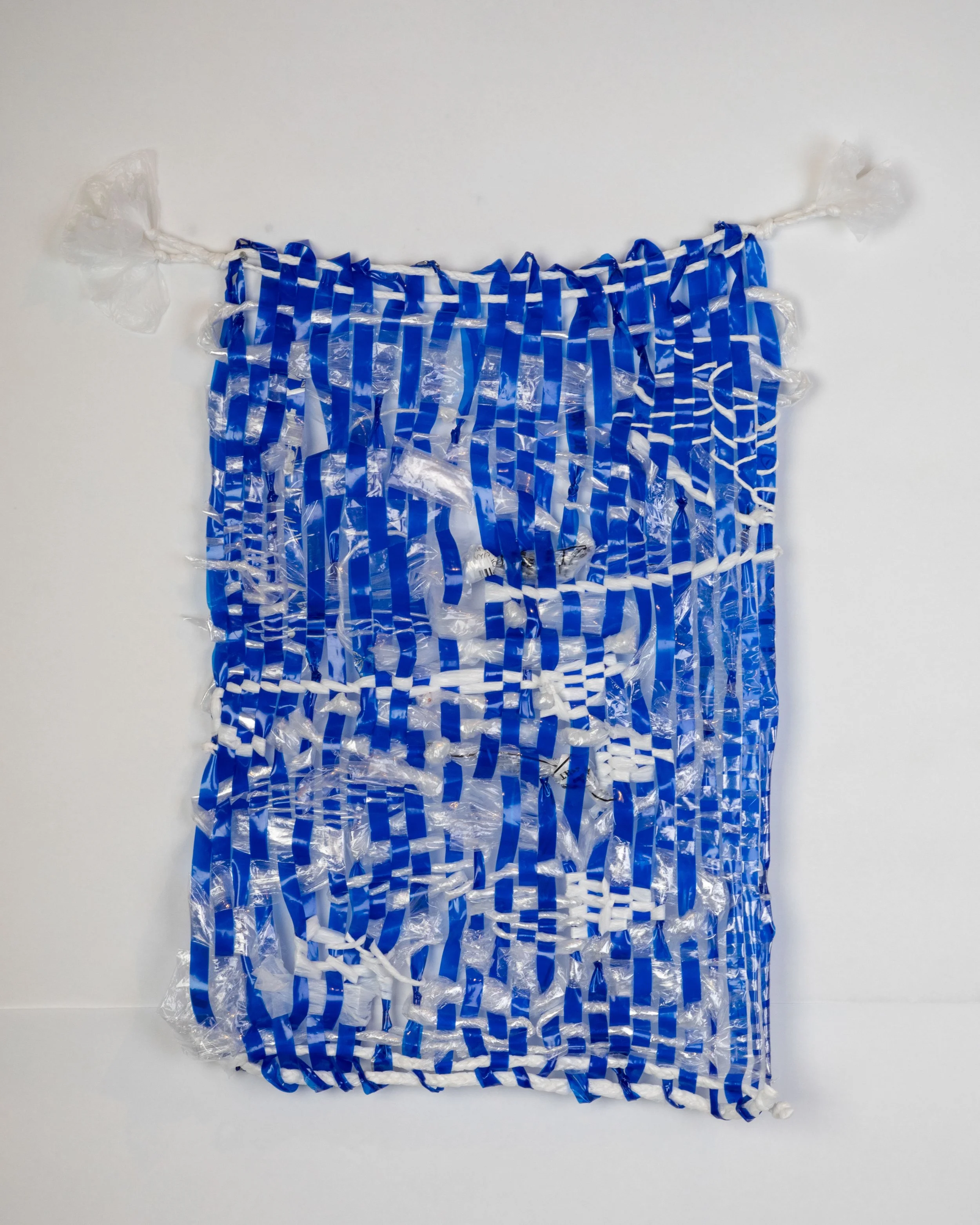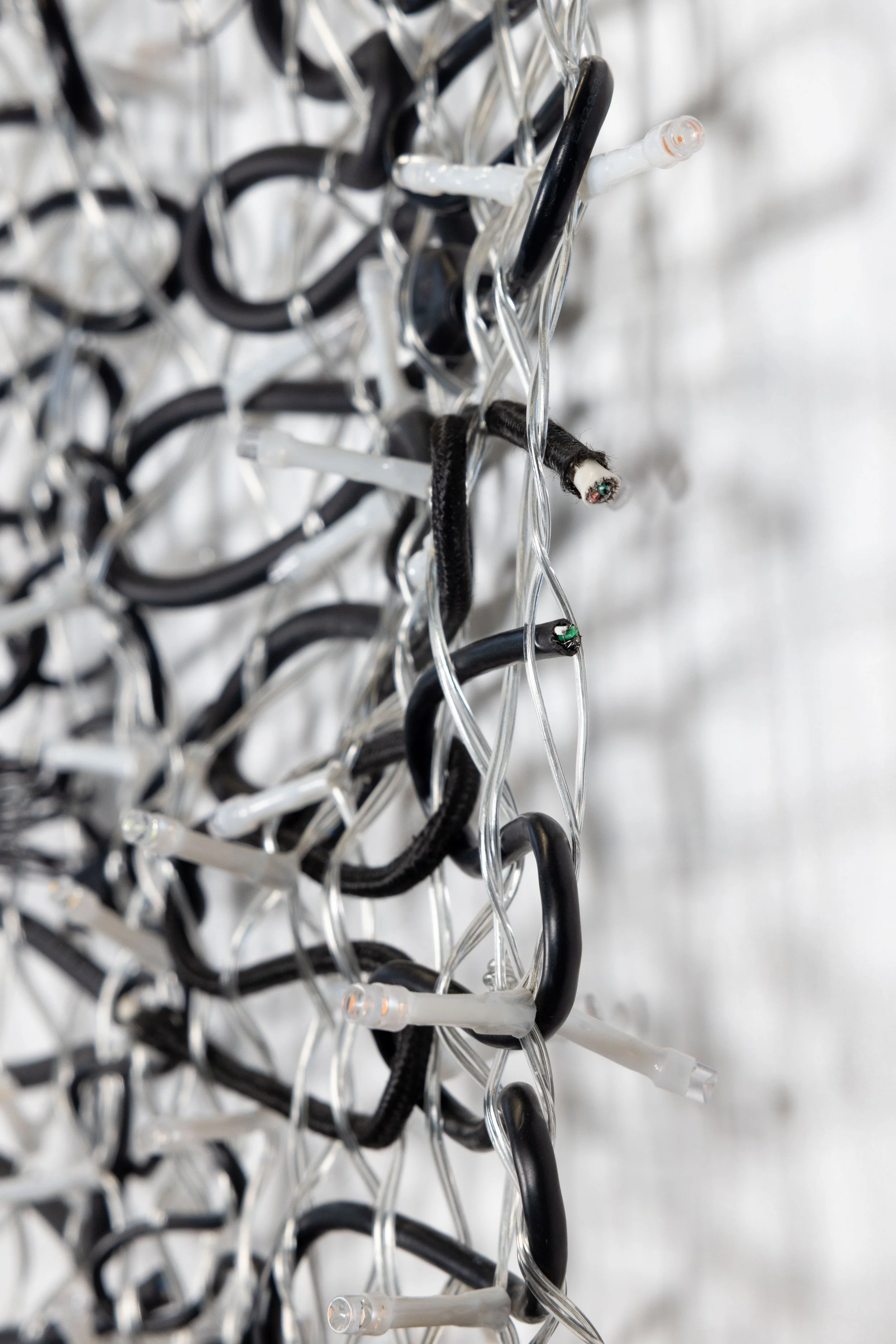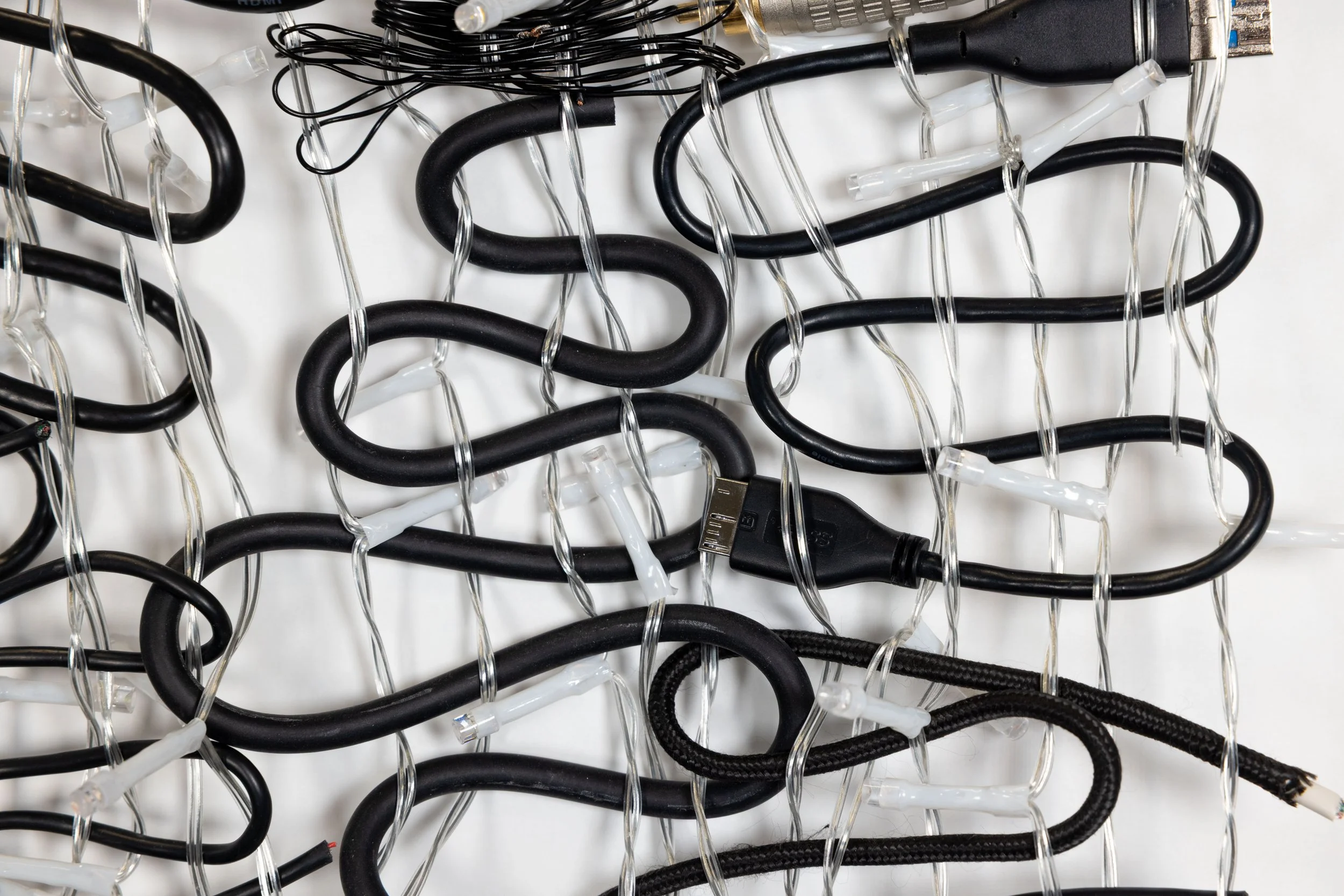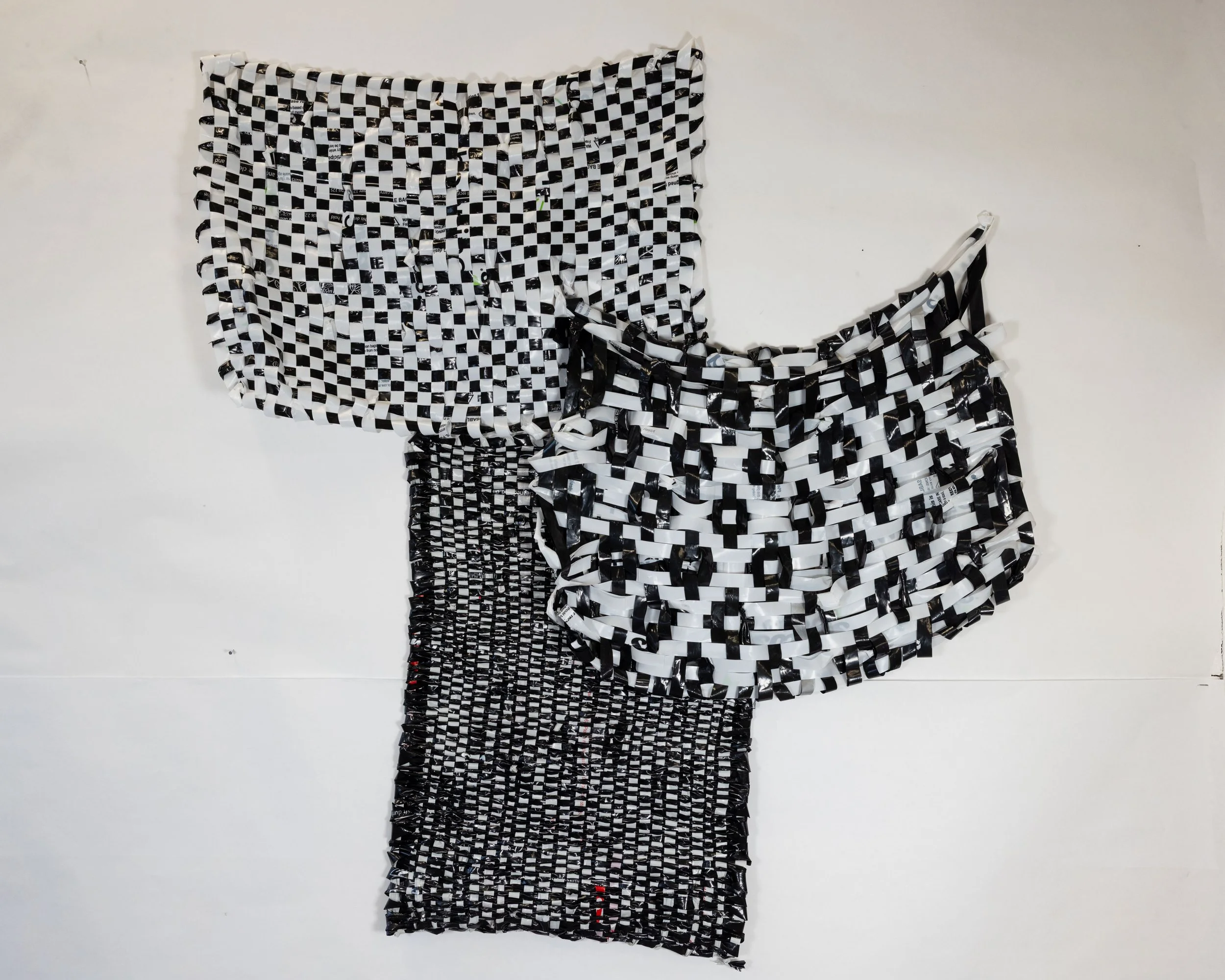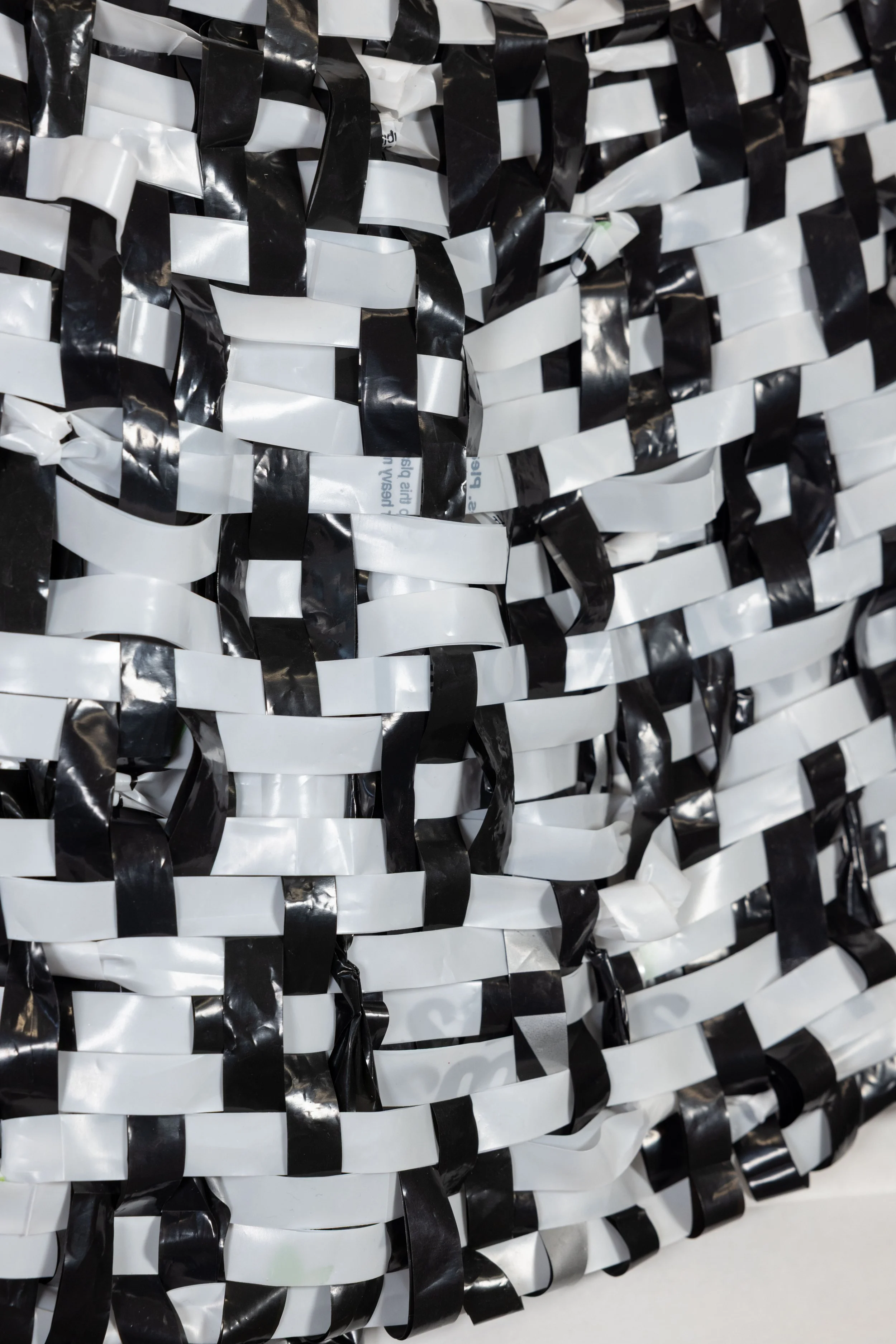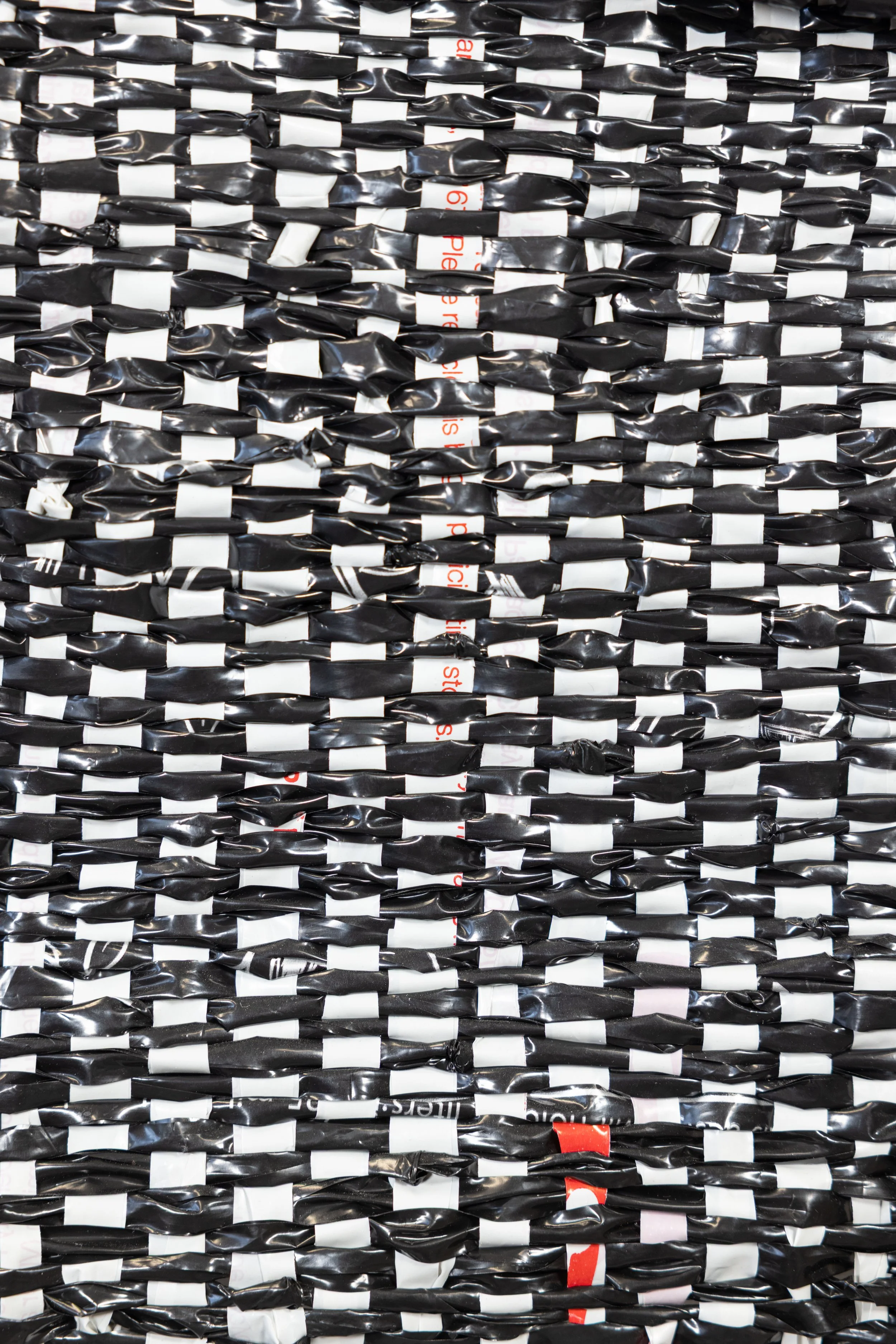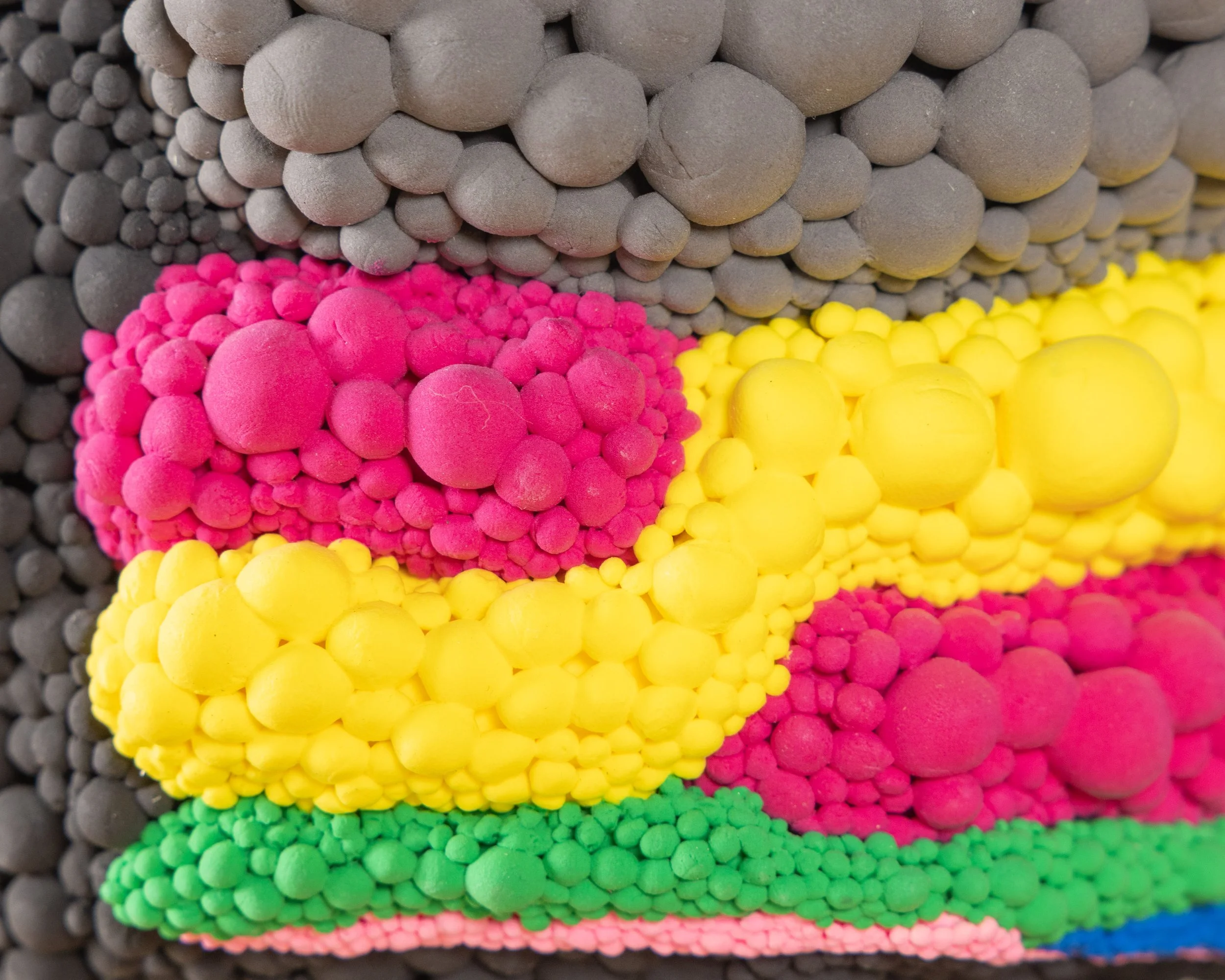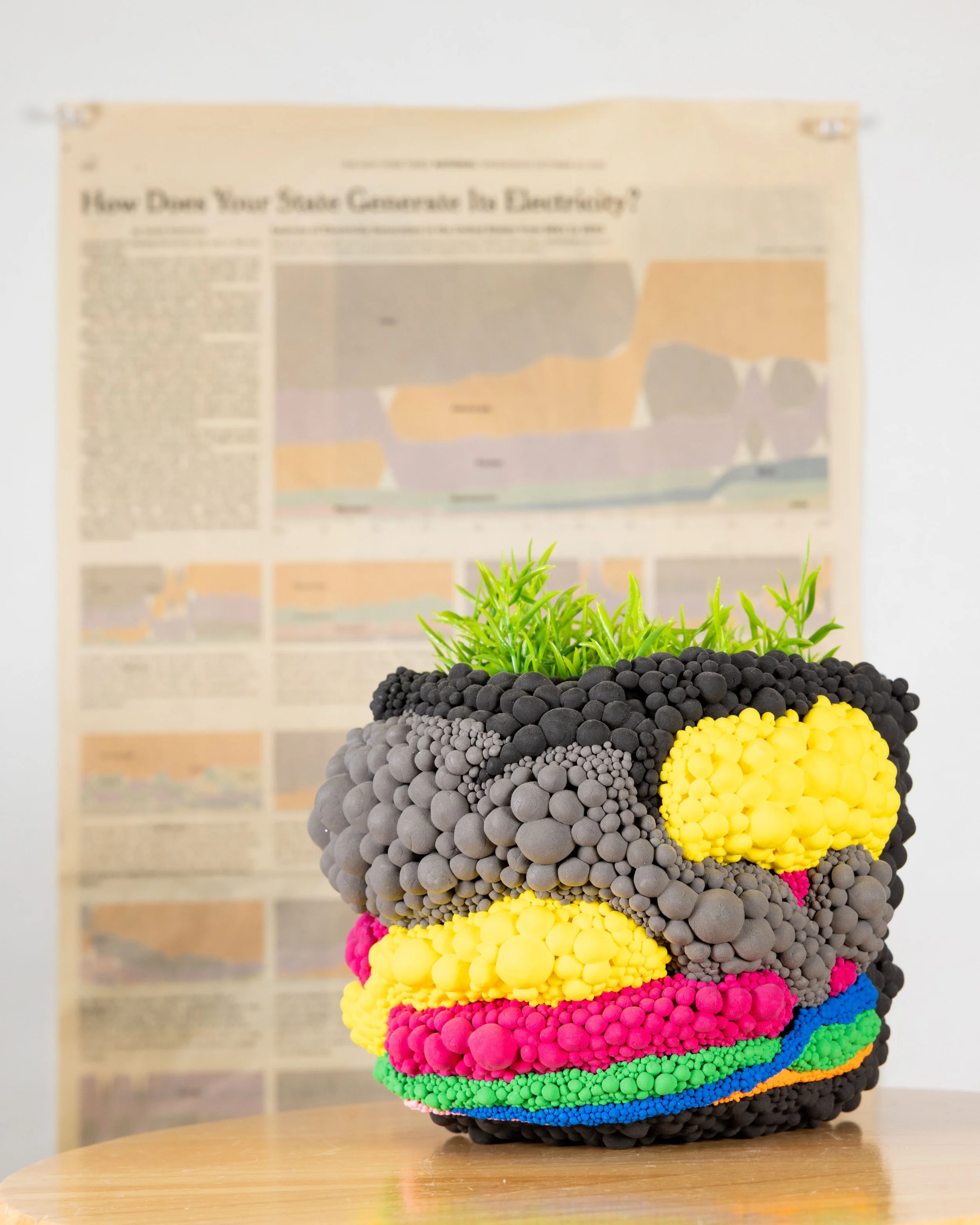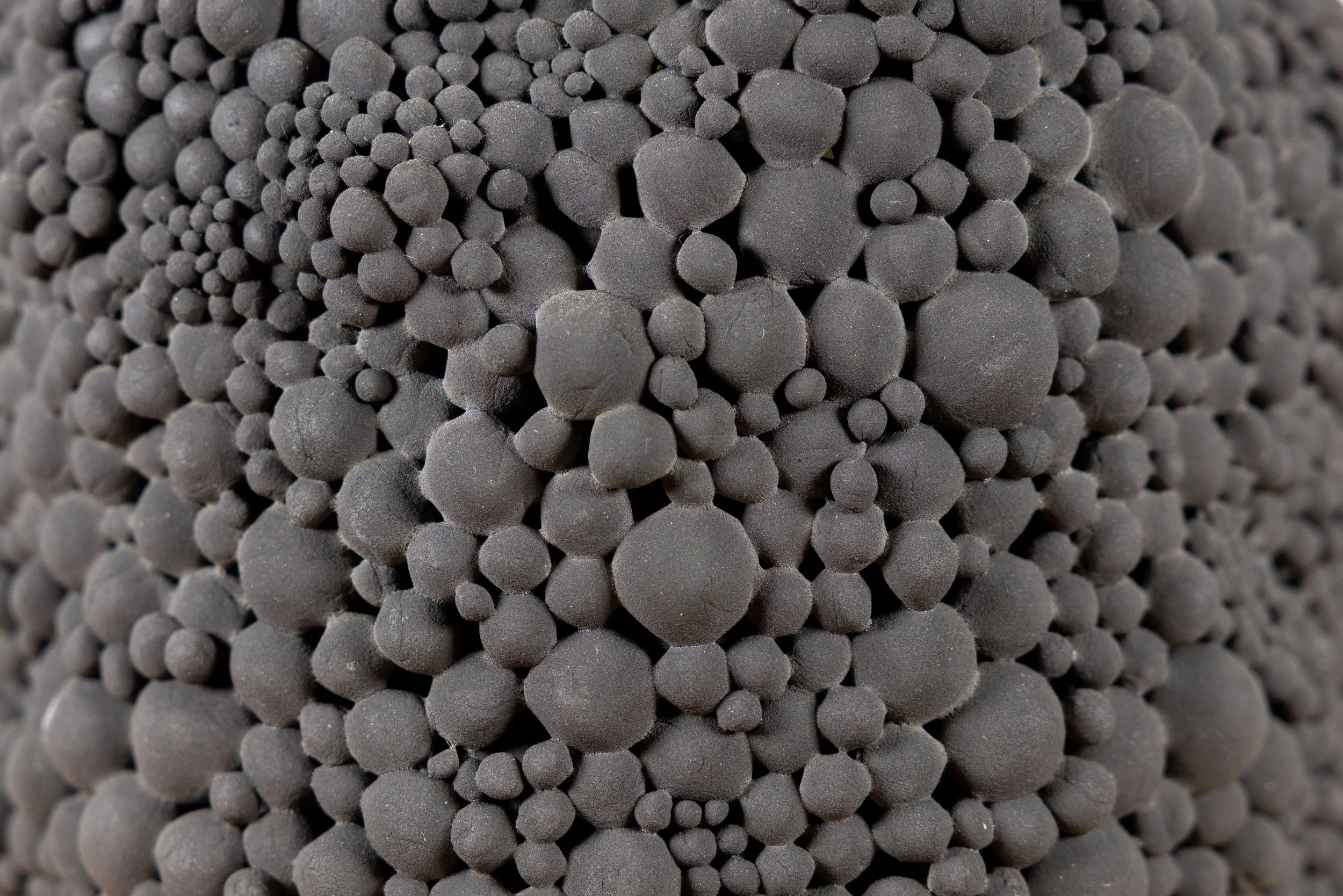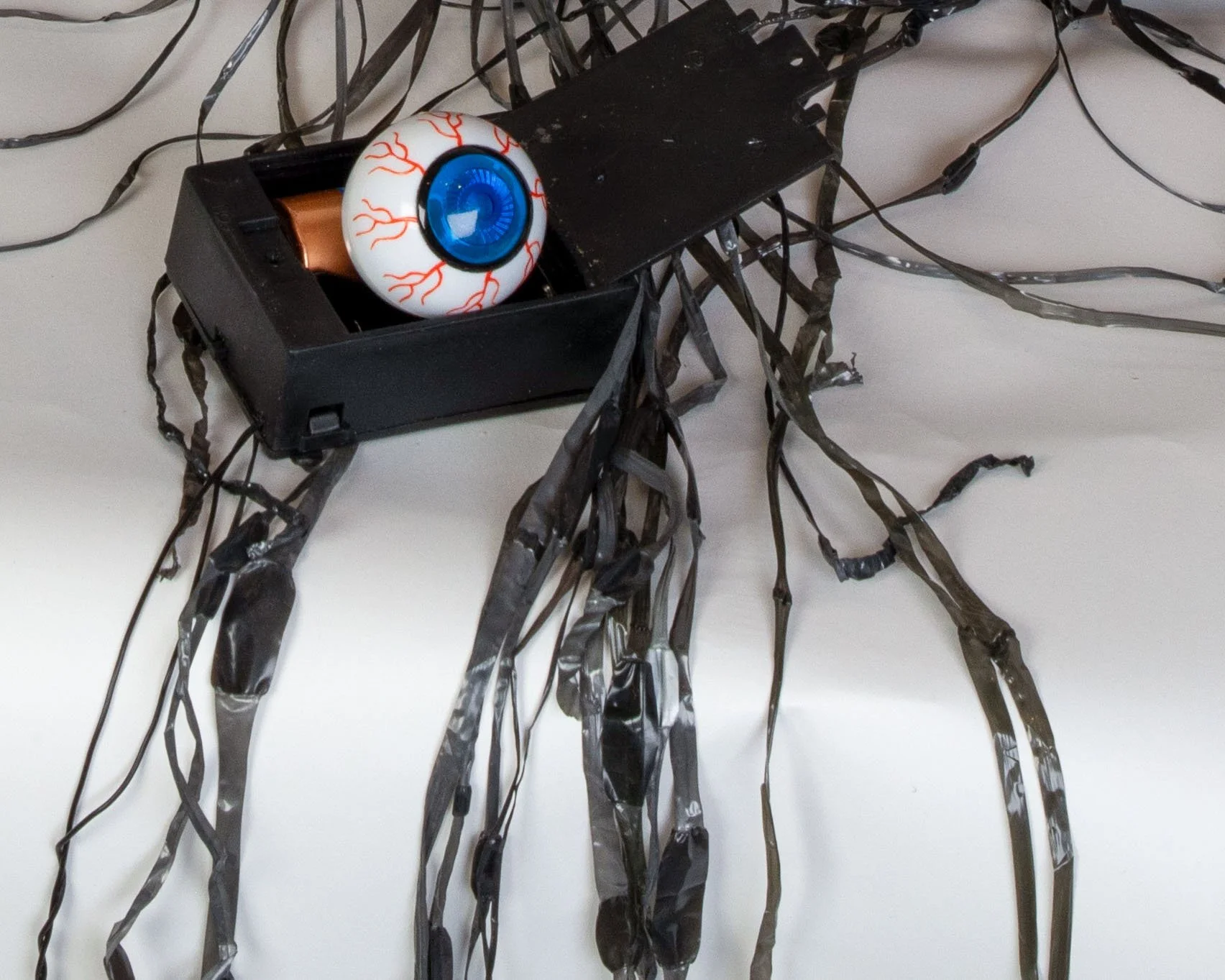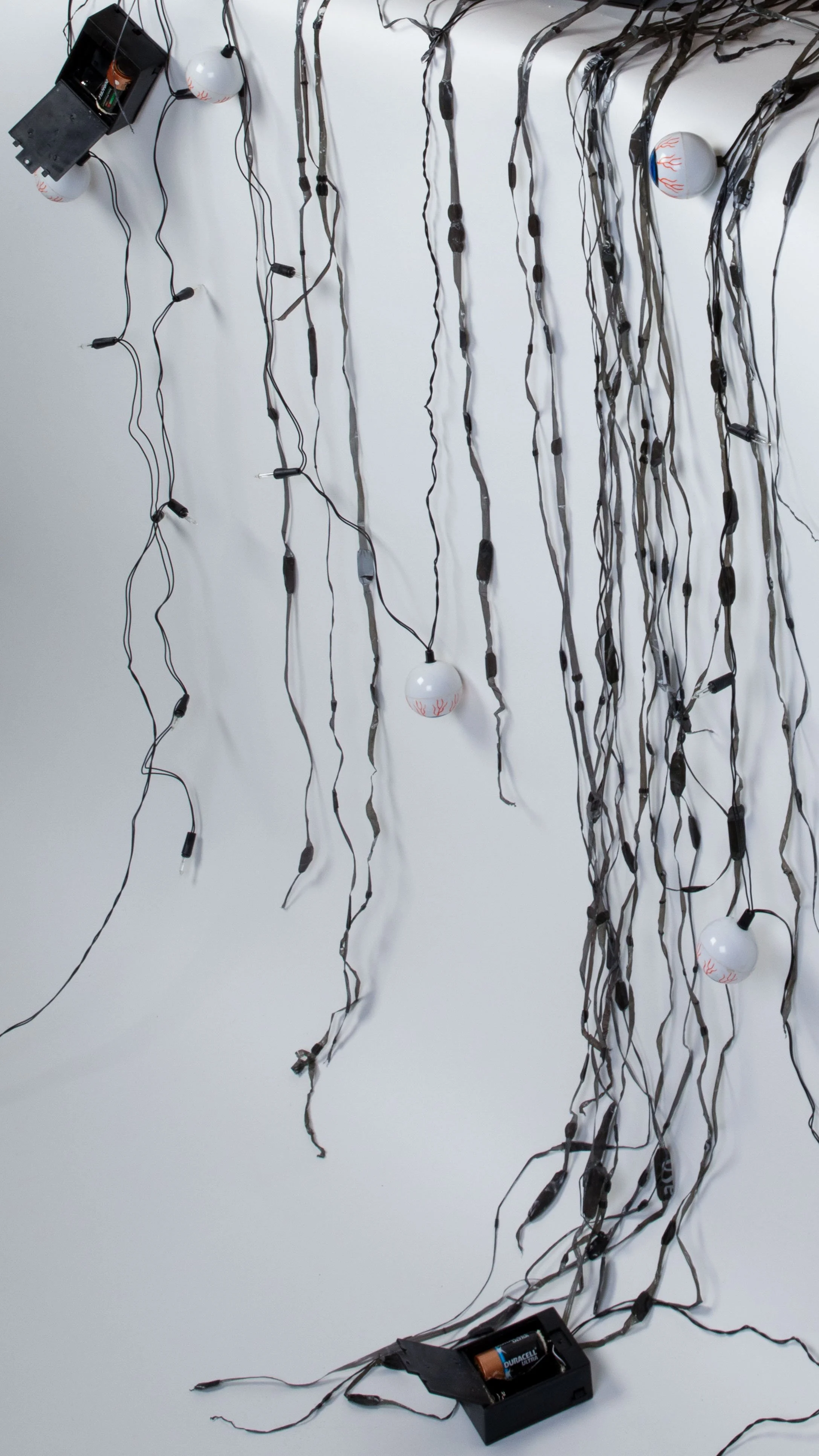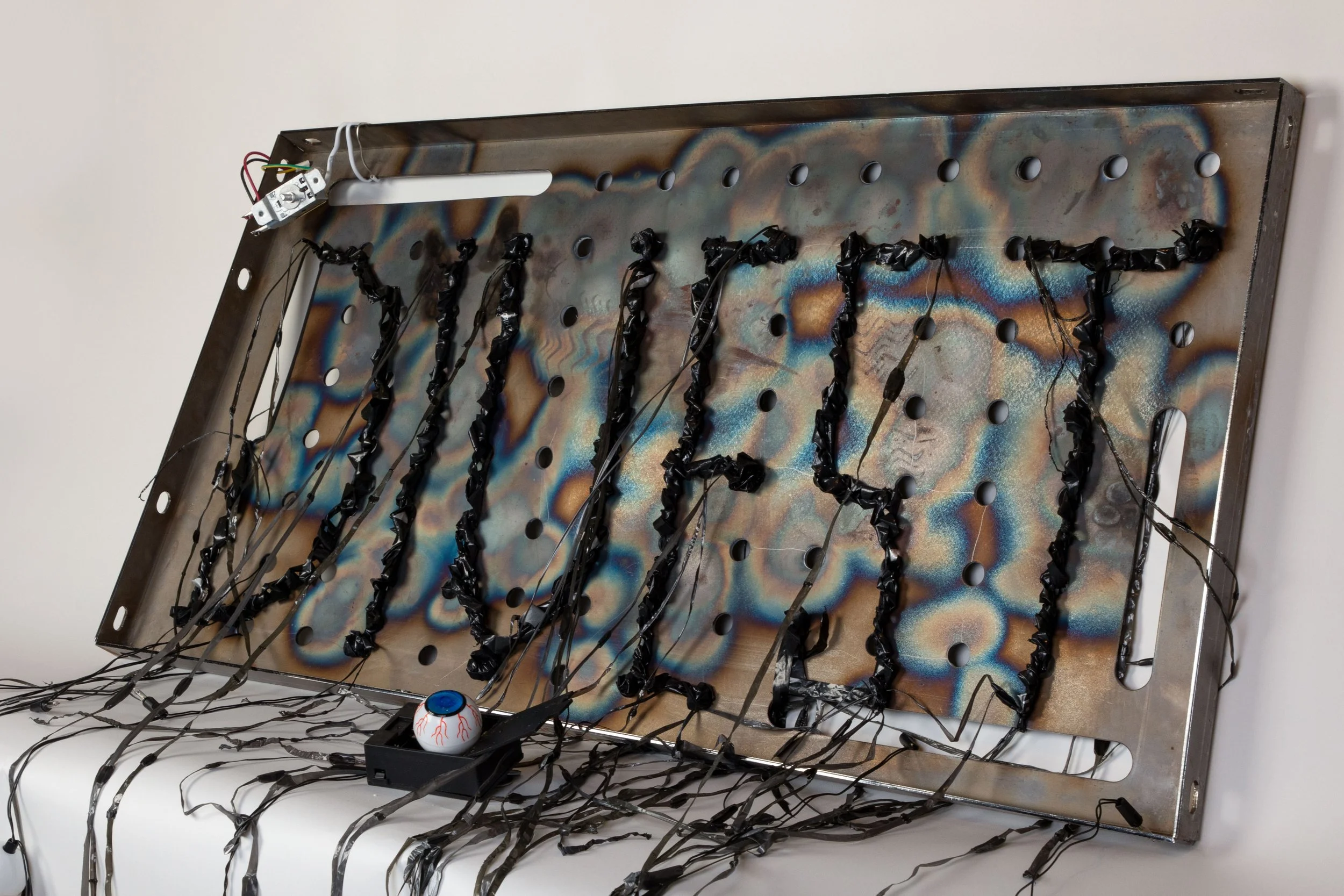Future Fossils
Afterlives of Discarded Things
An era of climate crisis and global capitalism shapes our relationship with the more extensive ecological system. Rampant consumption rationalizes and requires the constant obsolescence of objects designed to be discarded: electronic products, plastic, information, etc. To counter this, I use art as a physical language of care in collecting, organizing, weaving, and sculpting.
The existential question of what makes something (un)desirable led me to treat waste and found materials as living beings navigating a life worth living. My approach to reinventing discarded objects seeks to mirror the natural process of ecological succession, where material, ideas, and information accumulate, take root, and gradually transform into something new. The use of plastic confronts the human paradox: we have transformed ancient organic matter into a substance that resists the natural cycles of decay. Yet, it has infiltrated every part of our ecosystem, including our bodies.
The materials for my artwork were gifts from people around me. Seeking to embody botanist Robin Kimmerer’s idea of “the fundamental nature of gifts: they move, and their value increases with their passage”, I create art that honors the connection between my collaborators because they are my mycelium network of nourishment and learning.
Ghost net
2025
Plastic yarn sourced from my roommate & professor
20 x 15 in, 50 x 38 cm
Disconnected Connections
2025
Wires, chargers, XLR cables, fairy light
18 x 10.5 in | 46 x 27 cm
Heat Islands
2025
Plastic yarn sourced from local CVS, Star Market and Richdale's
20 x 15 in | 50 x 38 cm
Artifact #2
2025
Information graphics by Nadja Popovich, foam clay, glass pot, plastic plants
4.3 x 5.5 x 6 in | 11 x 14 x 15 cm
Quiet dystopia
2025
Plastic yarn, metal plate, Halloween lights, broken fridge parts
Dimension tbc
